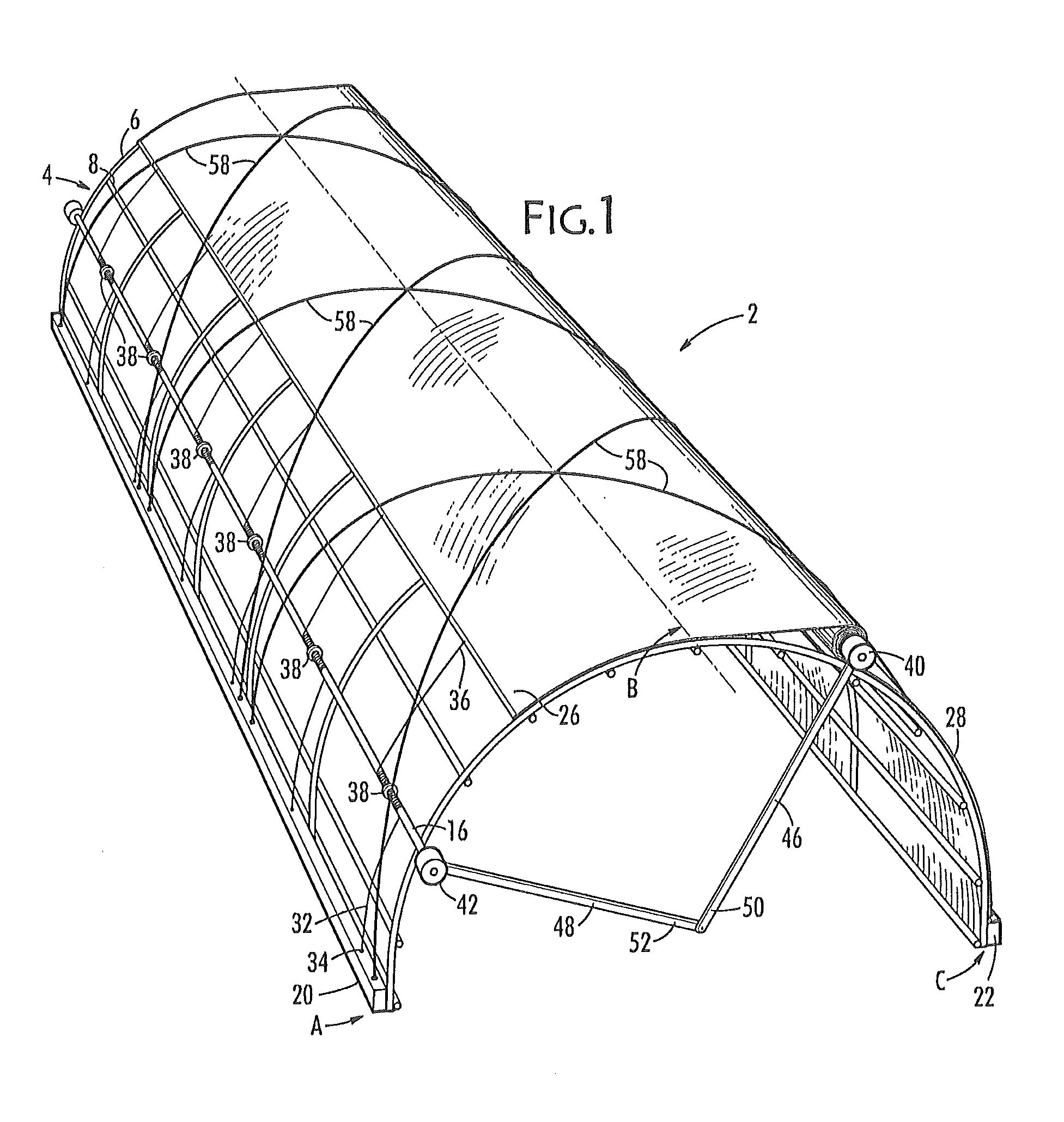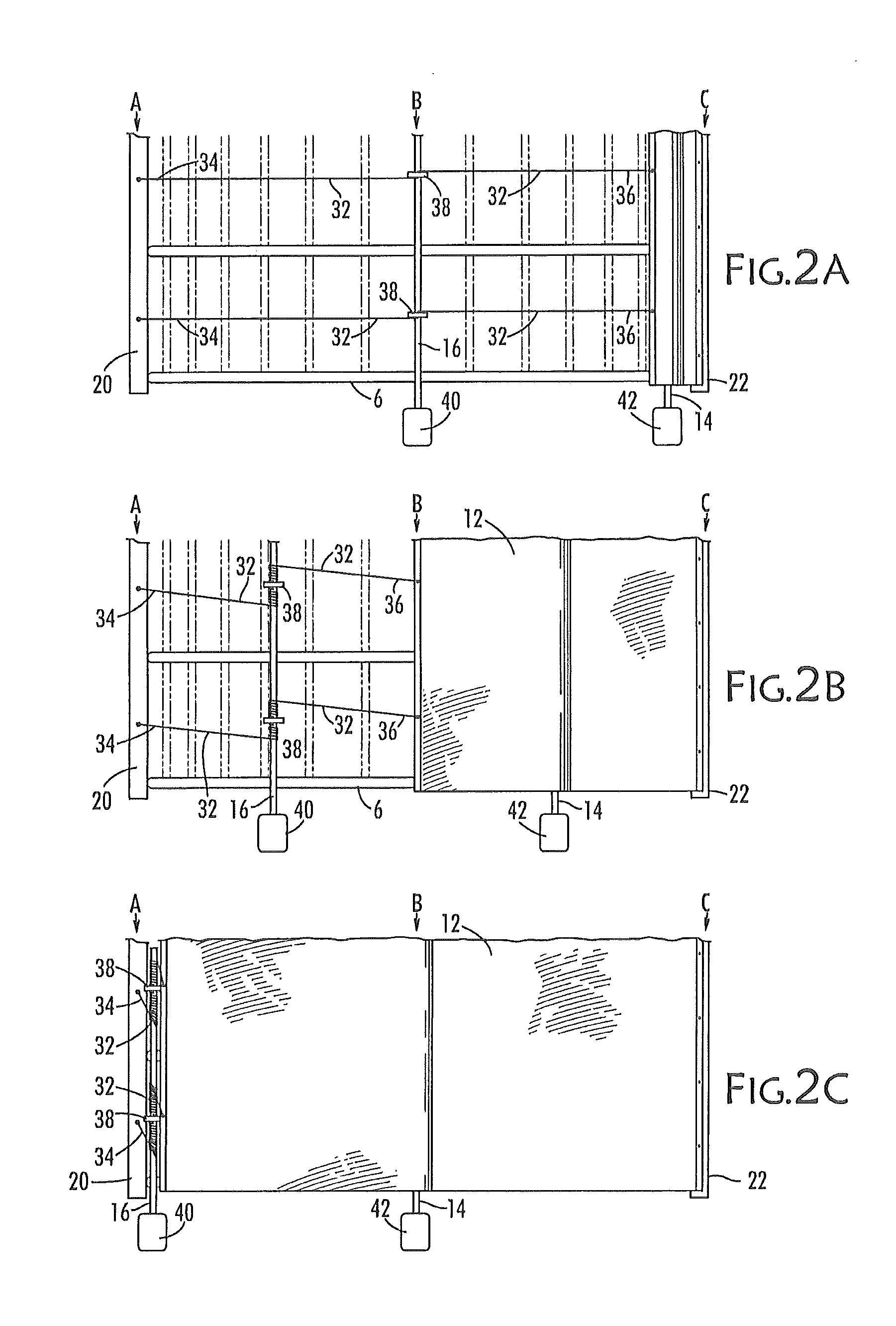Covering mechanism for a cold frame
- Summary
- Abstract
- Description
- Claims
- Application Information
AI Technical Summary
Benefits of technology
Problems solved by technology
Method used
Image
Examples
Embodiment Construction
[0028]As described in summary form above, this invention relates to a covering mechanism for a cold frame, Although described in terms of its use with a cold frame, it will be clear that the covering mechanism can be used with other temporary or semi-permanent enclosures with little or no modification.
[0029]A cold frame is essentially a rounded structure, roughly forming a flattened half cylinder, made by combining a series of bowed members and purlins together to form a simple frame. The frame elements are typically made of tubular metal such as aluminum, and support a flexible, light-transmitting covering. The frame gives the cold frame its characteristic shape and serves to define the roof and walls of the cold frame. The bowed members, which are affixed at their bases to a foundation, and purlins, are further supported at the ends of the cold frame by vertical end members.
[0030]A cold frame according to one embodiment of the present invention is illustrated in FIGS. 1, 2A-C, and...
PUM
 Login to View More
Login to View More Abstract
Description
Claims
Application Information
 Login to View More
Login to View More - R&D
- Intellectual Property
- Life Sciences
- Materials
- Tech Scout
- Unparalleled Data Quality
- Higher Quality Content
- 60% Fewer Hallucinations
Browse by: Latest US Patents, China's latest patents, Technical Efficacy Thesaurus, Application Domain, Technology Topic, Popular Technical Reports.
© 2025 PatSnap. All rights reserved.Legal|Privacy policy|Modern Slavery Act Transparency Statement|Sitemap|About US| Contact US: help@patsnap.com



